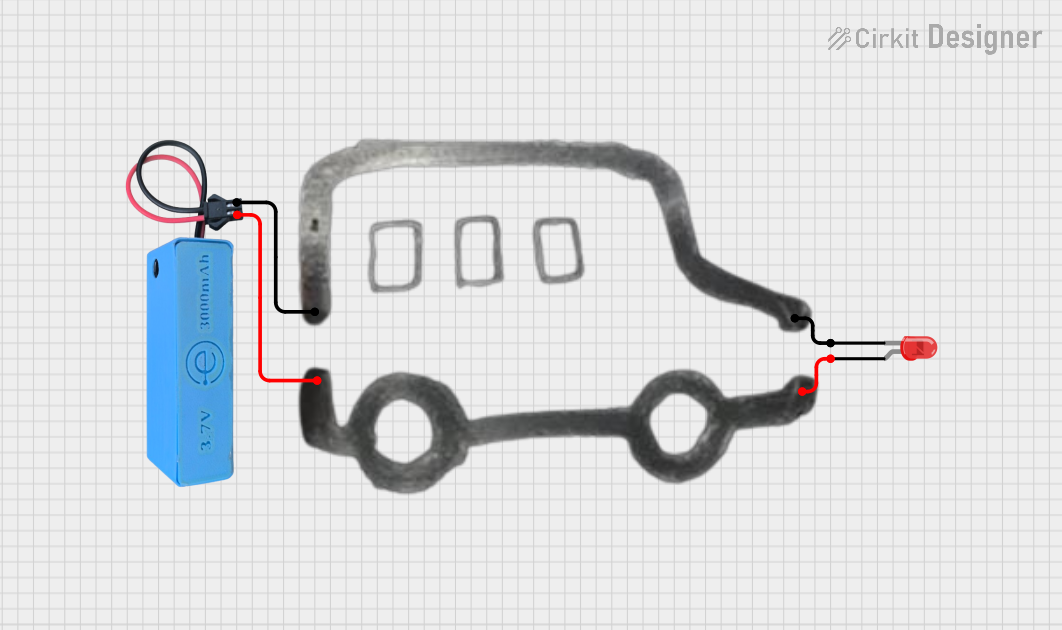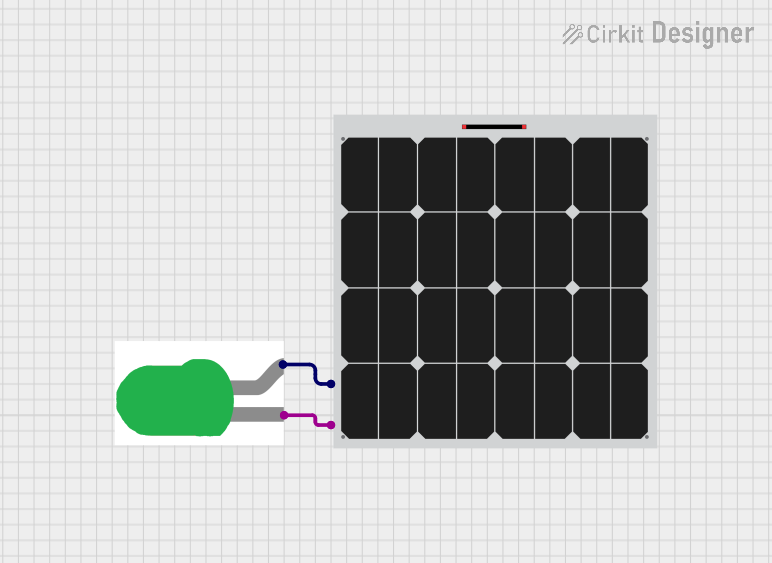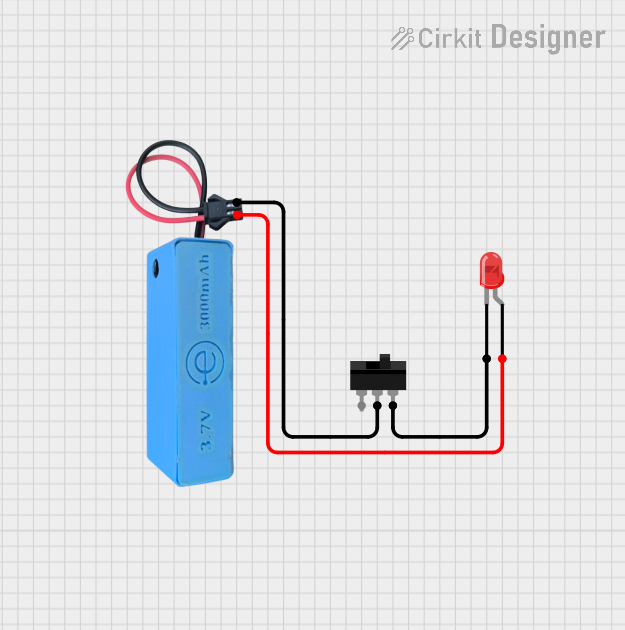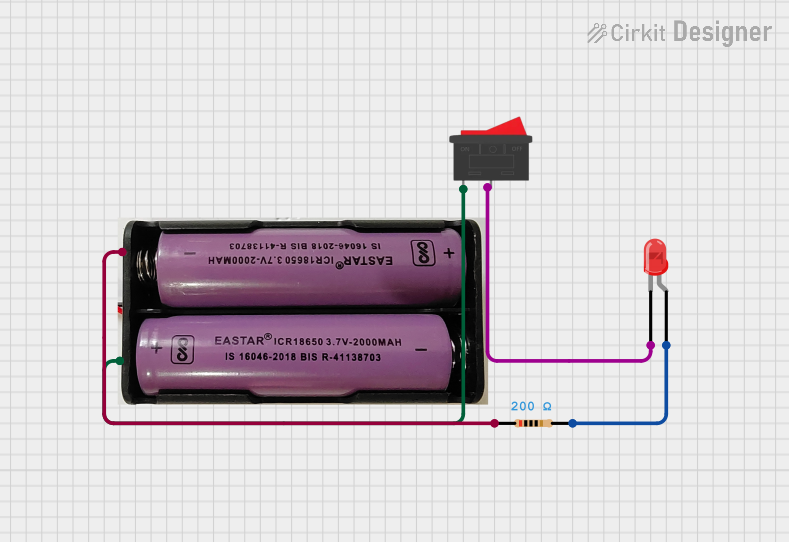
How to Use WHITE LED: Examples, Pinouts, and Specs

 Design with WHITE LED in Cirkit Designer
Design with WHITE LED in Cirkit DesignerIntroduction
A white Light Emitting Diode (LED) is a semiconductor device that emits white light when an electric current flows through it. White LEDs are widely used in various applications due to their energy efficiency, long lifespan, and compact size. They are commonly employed in indicator lights, backlighting, general-purpose lighting, and decorative lighting systems.
Explore Projects Built with WHITE LED

 Open Project in Cirkit Designer
Open Project in Cirkit Designer
 Open Project in Cirkit Designer
Open Project in Cirkit Designer
 Open Project in Cirkit Designer
Open Project in Cirkit Designer
 Open Project in Cirkit Designer
Open Project in Cirkit DesignerExplore Projects Built with WHITE LED

 Open Project in Cirkit Designer
Open Project in Cirkit Designer
 Open Project in Cirkit Designer
Open Project in Cirkit Designer
 Open Project in Cirkit Designer
Open Project in Cirkit Designer
 Open Project in Cirkit Designer
Open Project in Cirkit DesignerTechnical Specifications
Below are the key technical details of a standard white LED:
| Parameter | Value |
|---|---|
| Forward Voltage (Vf) | 2.8V to 3.6V |
| Forward Current (If) | 20mA (typical) |
| Maximum Current (Imax) | 30mA |
| Luminous Intensity | 2,000 to 15,000 mcd (varies) |
| Viewing Angle | 20° to 60° |
| Wavelength (Color Temp) | 4,500K to 6,500K (Cool White) |
| Power Dissipation | 75mW (typical) |
| Operating Temperature | -40°C to +85°C |
Pin Configuration and Descriptions
White LEDs typically have two pins:
| Pin | Description |
|---|---|
| Anode (+) | The longer pin, connected to the positive terminal of the power supply or circuit. |
| Cathode (-) | The shorter pin, connected to the negative terminal or ground. |
Note: If the pins are trimmed or unclear, the flat edge on the LED body indicates the cathode (-).
Usage Instructions
How to Use the White LED in a Circuit
Determine the Resistor Value:
To prevent damage, always use a current-limiting resistor in series with the LED. Calculate the resistor value using Ohm's Law:
[ R = \frac{V_{supply} - V_f}{I_f} ]
Where:- ( V_{supply} ) is the supply voltage.
- ( V_f ) is the forward voltage of the LED.
- ( I_f ) is the desired forward current (typically 20mA).
For example, if ( V_{supply} = 5V ), ( V_f = 3V ), and ( I_f = 20mA ):
[ R = \frac{5V - 3V}{0.02A} = 100\Omega ]Connect the LED:
- Connect the anode (+) to the positive terminal of the power supply through the resistor.
- Connect the cathode (-) to the ground.
Power the Circuit:
Ensure the power supply voltage matches the calculated resistor value and LED specifications.
Important Considerations and Best Practices
- Polarity Matters: LEDs are polarized components. Reversing the polarity may prevent the LED from lighting up or cause damage.
- Avoid Overcurrent: Exceeding the maximum current rating can permanently damage the LED. Always use a resistor.
- Heat Management: For high-power LEDs, consider using a heatsink to dissipate heat.
- Series and Parallel Configurations: When using multiple LEDs, calculate resistor values for each configuration.
Example: Connecting a White LED to an Arduino UNO
Below is an example of how to connect and control a white LED using an Arduino UNO:
Circuit Setup
- Connect the anode (+) of the LED to a 220Ω resistor.
- Connect the other end of the resistor to digital pin 9 on the Arduino.
- Connect the cathode (-) of the LED to the Arduino's GND pin.
Arduino Code
// Example code to blink a white LED connected to pin 9 of Arduino UNO
const int ledPin = 9; // Define the pin connected to the LED
void setup() {
pinMode(ledPin, OUTPUT); // Set the LED pin as an output
}
void loop() {
digitalWrite(ledPin, HIGH); // Turn the LED on
delay(1000); // Wait for 1 second
digitalWrite(ledPin, LOW); // Turn the LED off
delay(1000); // Wait for 1 second
}
Note: Adjust the resistor value based on the LED's forward voltage and the Arduino's 5V output.
Troubleshooting and FAQs
Common Issues and Solutions
LED Does Not Light Up:
- Cause: Incorrect polarity.
Solution: Ensure the anode (+) is connected to the positive terminal and the cathode (-) to ground. - Cause: Insufficient current.
Solution: Verify the resistor value and ensure the power supply provides adequate voltage.
- Cause: Incorrect polarity.
LED Flickers or is Dim:
- Cause: Insufficient power supply or loose connections.
Solution: Check all connections and ensure the power supply is stable.
- Cause: Insufficient power supply or loose connections.
LED Burns Out Quickly:
- Cause: Excessive current.
Solution: Use a properly calculated resistor to limit the current.
- Cause: Excessive current.
Multiple LEDs in Series/Parallel Not Working:
- Cause: Incorrect resistor calculation or wiring.
Solution: Recalculate resistor values for the specific configuration and verify connections.
- Cause: Incorrect resistor calculation or wiring.
FAQs
Q: Can I connect a white LED directly to a 5V power supply?
A: No, you must use a current-limiting resistor to prevent damage to the LED.Q: How do I know the polarity of the LED if the pins are trimmed?
A: Look for the flat edge on the LED body, which indicates the cathode (-).Q: Can I use a white LED with a 3.3V microcontroller?
A: Yes, but ensure the forward voltage of the LED is less than 3.3V and use an appropriate resistor.Q: What happens if I exceed the maximum current rating?
A: The LED may overheat, degrade, or fail permanently.
By following this documentation, you can effectively use a white LED in your projects while ensuring optimal performance and longevity.